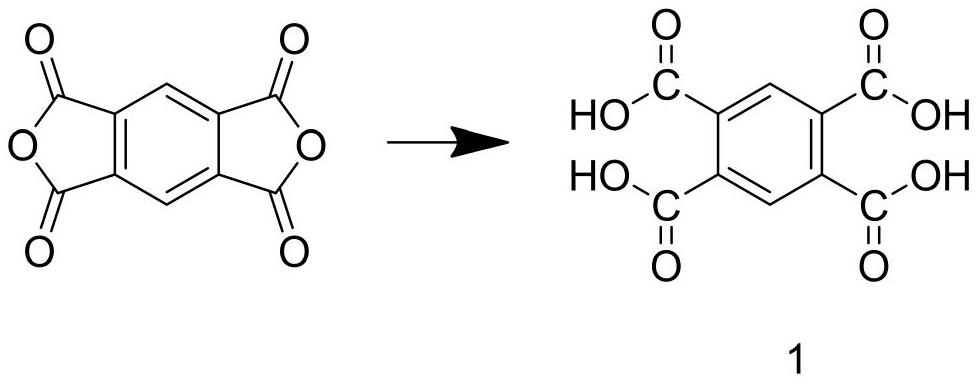Modified polypropylene PP plastic
A polypropylene and plastic technology, applied in the direction of zinc oxide/zinc hydroxide, etc., can solve the problems of breeding bacteria, virus infection, low antibacterial durability of polypropylene PP plastic, etc., and achieve the effect of preventing cell respiration
- Summary
- Abstract
- Description
- Claims
- Application Information
AI Technical Summary
Problems solved by technology
Method used
Image
Examples
Embodiment 1
[0041] A modified polypropylene PP plastic, made of the following raw materials in parts by weight: 80 parts of polypropylene, 8 parts of antibacterial filler, 2 parts of antimony trioxide, 3 parts of monoglyceride stearate, 3 parts of dioctyl sebacate 2 parts, glass fiber 2 parts;
[0042] The modified polypropylene PP plastic is made by the following steps:
[0043]Step S1: stirring the polypropylene and monoglyceride stearate for 10 minutes at a rotational speed of 300 r / min to obtain the first mixture;
[0044] Step S2: Stir the antibacterial filler and glass fiber for 3 minutes at a rotational speed of 500 r / min, then add antimony trioxide, and continue stirring for 10 minutes to obtain a second mixture;
[0045] Step S3: Melt and stir the first mixture and the second mixture at a speed of 1000r / min and a temperature of 160°C for 5 minutes, then add dioctyl sebacate and continue stirring for 20 minutes to obtain a molten material ;
[0046] Step S4: Put the molten mate...
Embodiment 2
[0055] A modified polypropylene PP plastic, made of the following raw materials in parts by weight: 85 parts of polypropylene, 9 parts of antibacterial filler, 3 parts of antimony trioxide, 4 parts of monoglyceride stearate, 4 parts of dioctyl sebacate 2 parts, glass fiber 2 parts;
[0056] The modified polypropylene PP plastic is made by the following steps:
[0057] Step S1: stirring the polypropylene and monoglyceride stearate for 13 minutes at a rotational speed of 400 r / min to obtain the first mixture;
[0058] Step S2: Stir the antibacterial filler and glass fiber for 4 minutes at a rotational speed of 600 r / min, then add antimony trioxide, and continue stirring for 13 minutes to obtain a second mixture;
[0059] Step S3: Melt and stir the first mixture and the second mixture for 8 minutes under the conditions of rotation speed of 1100 r / min and temperature of 170 ° C, then add dioctyl sebacate and continue stirring for 25 minutes to obtain a molten material ;
[0060...
Embodiment 3
[0069] A modified polypropylene PP plastic, made of the following raw materials in parts by weight: 90 parts of polypropylene, 9 parts of antibacterial filler, 4 parts of antimony trioxide, 4 parts of monoglyceride stearate, and 4 parts of dioctyl sebacate , 4 parts of glass fiber;
[0070] The modified polypropylene PP plastic is made by the following steps:
[0071] Step S1: stirring the polypropylene and monoglyceride stearate for 13 minutes at a rotational speed of 400 r / min to obtain the first mixture;
[0072] Step S2: Stir the antibacterial filler and glass fiber for 4 minutes at a rotational speed of 700 r / min, then add antimony trioxide, and continue stirring for 13 minutes to obtain a second mixture;
[0073] Step S3: Melt and stir the first mixture and the second mixture at a speed of 1200r / min and a temperature of 170°C for 8 minutes, then add dioctyl sebacate and continue stirring for 25 minutes to obtain a molten material ;
[0074] Step S4: Put the molten mat...
PUM
 Login to View More
Login to View More Abstract
Description
Claims
Application Information
 Login to View More
Login to View More - R&D
- Intellectual Property
- Life Sciences
- Materials
- Tech Scout
- Unparalleled Data Quality
- Higher Quality Content
- 60% Fewer Hallucinations
Browse by: Latest US Patents, China's latest patents, Technical Efficacy Thesaurus, Application Domain, Technology Topic, Popular Technical Reports.
© 2025 PatSnap. All rights reserved.Legal|Privacy policy|Modern Slavery Act Transparency Statement|Sitemap|About US| Contact US: help@patsnap.com



